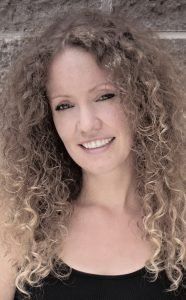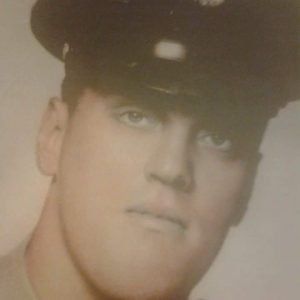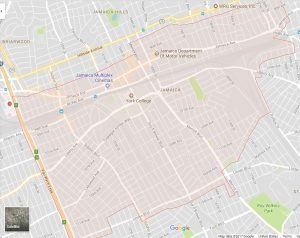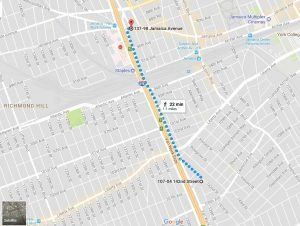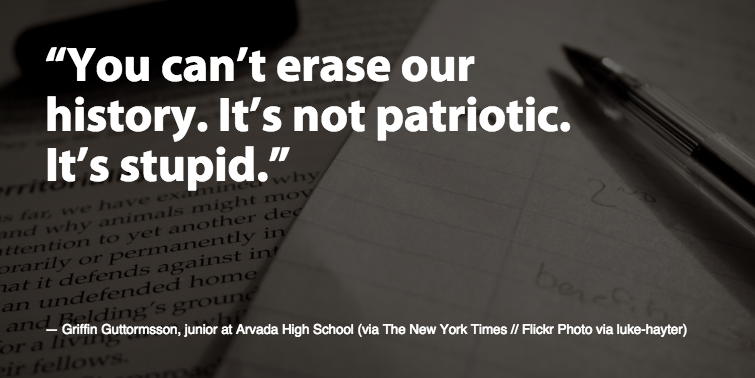Christine Sleeter
Blog Layout
Confronting Racism at Home
Christina Berchini • Nov 20, 2017
As a white teacher educator who has taken on the “daunting” (Sleeter, 2008) work of antiracist education with preservice teachers, the work of critical family history is beginning to play a key role in my classroom. Importantly, critical family history is giving me insights into my family’s complicity in the fight against multiculturalism, as it took place in New York City. For me, the work of confronting racism at home, and teaching students how they might also do this work, begins with an understanding of the role my family played in some of our city’s earliest acts of resistance against multiculturalism.
The Beginning of a Journey Toward Critical Family History: Meet “Pop”
Like Jessica—the white teacher at the heart of Sleeter’s novel White Bread—my knowledge of my family stops with my grandparents and some scattered details about a few great grandparents. The paternal side of my family tree is staggeringly complicated: Because my father never knew his father, and his mother never knew her father (these marriages did not exist, and children were born out of wedlock), surnames and countries of origin—in most cases—are simply not known. In fact, my own last name (“Berchini”) is a product of convenience: It is the name my grandmother chose for my father, to match his older brother’s name (my uncle’s father was named Pablo Berchini, a man I’ve never met, and with whom I do not share any DNA whatsoever). The words “evil” and “bastard” also had something to do with this decision.
My explorations at this time are thus narrowed to my maternal side, which is a little easier to trace. This choice is both a matter of convenience but also a function of having spent a great deal of my childhood with “Pop” – my beloved maternal grandfather. My family took regular trips from our tiny apartment in Gravesend, Brooklyn to Jamaica, Queens (a neighborhood in one of New York City’s five boroughs), where we’d visit my grandfather, his sister, and brother (my second aunt and uncle). By this time (the late 1980s to early 90s) Jamaica was a predominantly black neighborhood.
I have recently begun situating my family in social and historical context by having a series of conversations with my grandfather about race. Upon undertaking this work, I knew right away that my family tree and the history in which it is situated was going to look rather different from that produced by other white academics, and possibly many white preservice teachers. I begin this work knowing some key components about my grandfather, his family, and his life as it intersected with my childhood:
- My grandfather was poor as a child; he grew up in Jamaica, Queens, and has spent the last couple of decades living in a trailer park in Florida.
- Homeownership and other assets were negligible, and never passed down as any form of a meaningful inheritance from which later generations would benefit. Indeed, there wasn’t anything to pass down. In fact, I am not aware of any inheritance, large or small, from which any one person in my family may have benefitted. I remember how my mother told me that her grandmother (Pop’s mother-in-law) suggested that, upon her death, her five grandchildren take themselves out to dinner, as she was not able to leave behind much more than the price of a meal.
Some of my most powerful childhood memories of my grandfather, however, are narrated by his racism. As I was growing up, Pop would make his beliefs about people of color known. From his point of view, the influx of people of color into Jamaica, Queens was solely responsible for the neighborhood “turning bad” (his words) prior to his exit from Queens to Long Island in the mid-sixties.
More recently, when hurricane Hermine was on track to hit Florida in the fall of 2016, I remember my stunned reaction to Pop’s decision to remain put, even after authorities declared mandatory evacuation. Although his trailer is inland, he is surround by trees. Trailers and trailer parks are notoriously vulnerable to extreme weather events. But his reason for staying put was simple: There were too many people of color staying at the shelters (my words). It should not have surprised me, that he chose his racism over his safety. I am used to such comments, now, as it is not often possible to have a conversation with him without some criticism centered on “the blacks” or “the Puerto Ricans”—I find myself quickly changing the subject back to family when this happens. I vividly remember hanging up the phone in tears when Hermine was about to hit. I was worried sick about his safety. He said that he was worried, too—even scared. But too racist, it seemed, to seek shelter from a deadly storm.
However, my strongest childhood memories of Pop involve threats of abandonment. As a white child born and raised in the inner-city, my experiences are anything but racially isolated. And this meant that I attended school with racially, culturally, ethnically, and linguistically diverse children. My grandfather threatened both my sister and me with abandonment had we ever decided to marry a person of color—the very friends who comprised my daily experiences. I remember observing his body tense up during these conversations; his jaw muscles twitching. He meant business. My mother would admonish him for saying such things. After all, she had not raised us to believe that interracial marriage was wrong. But the damage was done. My relationship with my grandfather seemed conditional, and rested upon my compliance with his wishes. I grew to avoid conversations about race. I think I even feared them. While I knew he was wrong, confronting racism at home, as a child, did not seem to be an option.
My reason for undertaking this work, then, is to grapple with and make sense of a paradox. Despite his racism, my grandfather’s lifelong friends—people with whom he remains connected—are people of color; his family came to the aid of black neighbors who were fearful of their white neighbors; and his brother (my uncle) maintained a serious relationship with a woman of color leading up to his death in 1991. As I recall, the only white people in attendance at my uncle’s funeral were those related to my uncle. Pop has also been outspoken against Donald Trump’s racism; and I, his own granddaughter, have designed a professional and personal life that is committed to antiracism—in spite of, or maybe because of, my upbringing. How to make sense of these contradictions?
Pop is my only surviving grandparent—he turns 83 this year. And while I vividly remember my parents’ attempts to shield my sister and me from his problematic stances toward people of color, my childhood memories are comprised of much more than this. He is a man who remembered every single birthday—and still does. He recently mailed me a twenty-five-dollar check for having turned 37 years old—as grandparents are wont to do. I remember how he diagnosed my car troubles nearly ten years ago when the transmission blew. Watching him stand over the hood of my car was like watching a magician: Electric sparks came and went on command, and otherwise dead components under the hood came to life with Pop’s bare hands. You never quite knew how he made it all happen, you just knew that he did. Like a magician. The army would make good use of his skills for six years, where he worked for the missile outfit and repaired military vehicles. During a recent conversation, he talked about the separate barracks assigned to people of color.
“Even when I was in the army, black men had their own barracks, and we had our own,” he said.
“Why do you think that was?” I asked. Of course I know why, but I wanted his perspective.
He told me of how he would go to the bar with people of color—friends he had made while in service. He recalled asking them about the separate barracks. “That ain’t right,” he had said to them. “You’re fighting for our country.”
I remember the annoyed and disappointed tone he had taken, as he shared this story. He was critical of how the army treated people of color, and this came through in his voice. These contradictory stories, coupled with my own experiences, have given me a complex view of my family’s history, as told through my grandfather.
A Sense of “Place”: Revisiting Jamaica, Queens
Pop was born and raised in Jamaica Queens, New York — a working-class/poor ethnic enclave consisting mostly of Italian, Polish, Irish, and Hungarian immigrants. He remembers when the first person of color moved to the neighborhood.
“The neighbors didn’t like it,” he said, during a recent discussion. “The white people in my neighborhood were very prejudiced.” He paused. “We weren’t.”
Pop’s family befriended the neighbor, who I’ll refer to as Flo. Flo asked for his family’s help when the neighbors had taken to harassing her with racial epithets and other forms of emotional violence. He witnessed his father (my great grandfather) get into fistfights with white neighbors over their treatment of Flo. Interestingly, this was his family’s way of confronting racism at home—with fists. I was surprised to learn this.
“They [the white neighbors] didn’t talk to my mother and father for years and years, but they apologized after a while,” he recalled.
Flo and my grandfather would maintain their friendship across the years. Because of personal hardships, he came to live with my family in Brooklyn, where he slept on the couch in our tiny apartment. He would borrow my parents’ car and take the half-hour drive to Queens to spend several hours with his old friend Flo.
His stories are dotted with memories about the Great Depression, his childhood job as a shoe-shiner making about three dollars per day on Jamaica Avenue (and running from the police who threatened to dismantle his shoe-shining box), and pigeon soup—his mother’s go-to recipe during tough times. She would actually capture a pigeon that stood perched on a nearby ledge, decapitate it, and prepare soup for her large family.
Racial events also narrated his stories. He told stories about racism and racial tensions that played out in Jamaica, Queens as though these events had happened yesterday.
“If you sold your house to a black family,” he said, “they [white neighbors] would burn your house down.”
Whites policed their neighborhood’s home sales, and reacted violently when real estate transactions defied their expectations for white ownership. Journalist, political commentator, and former White House Press Secretary Bill Moyers operates Moyers & Company, a media website that brought me to the story of the Spencer family. A black family, the Spencers moved to Rosedale, Queens in 1974—approximately five miles from my grandfather’s neighborhood. Whites doused the house with gasoline and set it on fire (with an audience of about 200 white spectators); whites later ignited a pipe bomb on the property. According to Moyers, the bomb came with a note that read: “N*****, be warned. We have time. We will get your firstborn first.” It was signed: “Viva Boston. KKK.”
Moyers explains how, since 1971, more than ten instances of similar violent acts—instigated by whites—were aimed at black families living in Rosedale. Despite the violence and destruction that whites brought to Jamaica, Queens and its surrounding communities when people of color attempted to move in, it was the demographic change that—for my grandfather—pointed to how the “neighborhood was turning bad.” His family moved out of Queens in the mid-sixties to a “whiter” neighborhood in Long Island. My grandfather admitted that his decision to move was a function of white flight.
“Jamaica wasn’t safe,” he said. “They tried to break into your house.”
My grandfather, like many whites, located the neighborhood’s crime rates in the incoming black community—wholly ignoring the emotional and physical violence their white neighbors committed against people of color. Historical accounts point to how Jamaica, Queens was, like much of New York City at the time, a site of political, economic, and racial unrest—chaos that seemed to culminate in the shooting death of Officer Edward Byrne, a white rookie police officer who was murdered in the middle of the night for protecting an eyewitness to felony drug crimes. This murder, according to Charles Blow, presented political opportunities for white politicians to leverage white votes, manufacturing the war on drugs as their rallying cry. Blow argues that white politicians—Democratic and Republican alike—have long scapegoated black populations in order to further their political agendas.
I do not wish to minimize my grandfather’s concerns for his safety and that of his family (including my mother, who spent the first few years of her life in Jamaica, Queens). But I am forced to wonder whether Pop’s fears were just another symptom of a successful political campaign against people of color. Moreover, a burgeoning civil rights movement was occurring at the same time. According to Moyers, the violence against the Spencers mobilized civil rights activists outside of Rosedale—a group that was committed to helping families of color move to the neighborhood. Did my grandfather—like so many others—flee the effects of a civil rights movement that was brought directly to his home town? It is likely. Not surprisingly, he does not conceptualize his choices in this way, and if he does, he’s remained silent about it. Fleeing the “bad” neighborhood for the safer suburbs is the story that has maintained itself across four generations.
Critical Family History, Silence, and Future Plans
I have only just begun to uncover the details of my family history, and for now, I remain equal parts intrigued and perplexed. I do not yet know how to make sense of a man who critiques racism about as much as he embodies it.
During one of our discussions, he recalled a warning that his mother imposed upon her daughter—his sister: “If you ever get pregnant by a black guy,” his mother had said, “you’re not my daughter.” Recall Pop’s attempts to strongarm his granddaughters by influencing our life choices with threats of abandonment. As it turns out, his mother is guilty of the same behavior—he, too, witnessed threats of abandonment, albeit not directly.
And yet: His mother is the same woman who welcomed Flo into her home for what my grandfather describes as “Polish food.” Flo would then cook for his family, and relied on his family for support when other white neighbors retaliated. As more black families moved into the neighborhood, they learned that they could trust my grandfather’s family as friends and neighbors. My grandfather’s brother would eventually begin dating a black woman—their mother had died before this relationship came to be.
I remember attending my (second) uncle’s funeral. I was eleven years old. By then, Jamaica, Queens was a predominantly black neighborhood; many residents came to the funeral to pay their respects to my uncle. I sat in the front row, my uncle laid out in his casket only a few feet away. I vividly recall how a woman of color limped toward the casket, bent down, and kissed my uncle’s forehead. As she walked away, I was struck by the sadness in her face. The Jamaica, Queens community came out in droves to support my grandfather’s family, and to see my uncle off. I can still recall the love that permeated that small room.
I am not attempting to portray my family as uncomplicated heroes loved by all in a larger story about whiteness, racism, and flight, nor do I find my grandfather’s perspectives excusable—such as when he describes Flo as a “very, very good black woman,” as though the general expectation is for the opposite to be true. As is the case for all whites, there is plenty of evidence that my family was, and remains, located in racist dynamics, in both formal and informal ways. One of these informal ways include silence about who we are and where we come from. Historical records, academic scholarship, and media accounts are helping me to unearth of a bit of that silence.
I plan to continue the conversation with my grandfather for as long as time allows. I am hoping to learn more about my great grandparents, and perhaps their parents, through historical records but also my grandfather’s memory. My wish is to also touch base with the Queens Historical Society, whether in person or virtually, for more perspective about the history of Jamaica, Queens and its surrounding areas. Gaining a sense of place seems important to the work of confronting racism at home, and as it played out in my family’s history.
Like many whites, I used to be of the mind that, having grown up in the inner-city and attended diverse city schools, I was not implicated in the larger picture of race and racism. My family, in many ways, continues to uphold this belief system. Uncovering the silences maintained by generations’ past, coupled with a sense of place, has provided entrée into confronting how, in many ways, my family is located in some of my city’s earliest acts of violence against multiculturalism.
References
Flynn Jr, J.E. (2015). White fatigue: Naming the challenge in moving from an individual to a systemic understanding of racism. Multicultural Perspectives, 17(3), 115-124.
Sleeter, C. (2008). Critical family history, identity, and historical memory. Educational Studies, 43(2), 114-124.
Christina Berchini is an Assistant Professor in the Department of English at the University of Wisconsin Eau Claire, a scholar in Critical Whiteness Studies, and a frequent contributor to Huffington Post.
Share
Tweet
Share
Mail
Christine Sleeter

By Christine Sleeter
•
30 Mar, 2024
How did the tobacco industry sow doubt about the research-documented link between smoking and lung cancer? Why are we still debating the link between human activity and global warming? In a recent conversation, a colleague and I began to explore connections between the anti-Critical Race Theory movement, and science denial. (For an excellent examination of the latter, see Science Denial by Gale Sinatra and Barbara A. Hofer.) I was directed to the book Merchants of Doubt (by Naomi Oreskes and Erik M. Conway), which lays out the playbook created by the tobacco industry, and has been applied since then to sowing doubts about other science-documented problems. Essentially, the playbook is this: When research evidence begins to undercut an industry or a way of life that some people are benefiting from greatly, the industry or benefiting group begins to seek out credible spokespeople who will cast doubt on what has otherwise become a consensus. To be credible, the doubters need to be scientists themselves, or otherwise members of the community that has been marshaling the unwelcome evidence. The doubters then gain access to the media, who report the doubts and cast the issue as still open to debate, even if it isn’t. They do this by pointing to exceptions and contrary evidence, exploiting claims of causality, and using hot button terms. Most journalists aren’t experts, but journalists relish having a good story. Journalists strive to present both sides, even if there isn’t really another side that has much evidence or credibility. The public, unaware of the research, learns about the issue from how the media report it—as a debatable issue with many unresolved questions. Much the same playbook being used to generate fear and backlash as white people lose control over a nation whose population continues to diversify. The strength of a multiracial coalition of voters put an African American man into the White House twice. By the mid 2040s, the nation is predicted to be majority “minority.” How will white people fare, especially if rules and norms that are biased in favor of whites are changed? Behold the disinformation campaign that has resulted over the past three years: When research evidence as well as narratives by people of color undercut the claim that systemic racism does not exist, many white people begin to seek out spokespeople who will cast doubt on its existence. To be credible, those spokespeople need to be people of color themselves, and/or people who have studied racial issues. The doubters gain accessed to the media, who report the doubts and cast the issue as still open to debate, even after those who study race agree that the existence of systemic racism is clear. They do this by pointing to exceptions (people of color who made it on their own) and contrary evidence (e.g., DEI training that went badly), and exploiting claims of causality, and using hot button terms. Most journalists aren’t experts, but journalists relish having a good story. Journalists strive to present both sides, even if there isn’t really another side that has much evidence or credibility. The public, unaware of the research, learns about the issue from how the media report it—as a debatable issue with many unresolved questions. In September of 2020, when Chris Rufo was invited to appear on Tucker Carlson’s Fox news show, this playbook sprang into action for the field of education. Here’s what happened: Research evidence as well as narratives by people of color document that systemic racism exists (the books and articles reporting research are voluminous). In education, systemic racism includes factors like tracking, school segregation, Euro-centric curriculum, an overwhelmingly white teaching force, discipline policies, etc. (Again, voluminous research publications for each of these; my work has synthesized research related to curriculum; see for example What the Research Says about Ethnic Studies ). Many white people who worry that addressing these factors will harm white children seek out spokespeople who will cast doubt on the existence of systemic racism in education. The doubters gain accessed to the media, who report the doubts and cast the existence of racism as still open to debate. They do this by pointing to exceptions (students of color who excelled in traditional schools, particularly Asian students) and contrary evidence (e.g., anti-racist teaching that went badly), and by using hot button terms (critical race theory; pornography). The right has used this issue to mobilize white parents to resist or overturn equity-oriented school policies, and to vote for MAGA candidates. What should be done? In agreement with authors of the books mentioned above, I believe that those of us in the research community need to give much more attention to synthesizing what the research says in terms lay people can understand, and put this work in places where they will encounter it. I gave a lecture for a lay audience in my community recently, which was very well received. Attendees had heard various things about “critical race theory” in the news, but didn’t know what to make of it until I clarified what critical race theory is, what systemic racism is, and how this controversy has been manufactured. Research alone will not change everyone. Race and racism evoke strong emotions; many people hold opinions they are strongly wedded to. But more communication about what the research says for a broad audience will help.

By Christine Sleeter & Francesca López
•
06 Jan, 2023
Posted earlier on the Teachers College Press website On November 16, 2022, PEN America released a report that found Missouri schools to have banned nearly 300 books since August, when SB 775, a new law that criminalizes “explicit sexual material,” went into effect. Under that law, providing such material to students in class is a misdemeanor, punishable by up to one year in jail and a $2000 fine. Although the law allows for some exceptions directly related to education, many educators find it intimidating. To be on the safe side, 11 school districts pulled almost 300 books from their shelves. These include books that go far beyond the letter of the law, such as Margaret Atwood’s The Handmaid’s Tale , Gabriella Di Cagno’s Michaelangelo: Master of the Italian Renaissance , Sean Murphy’s Batman: White Knight , and Don Nardo’s Life in a Nazi Concentration Camp . Some of the recent surge of censorship aims to omit historical accounts that present the US in an unfavorable light, and some aims to sustain the marginalization of people of color and members of the LGBTQ community. In spring of 2022, two reports investigating book banning were released, one by PEN America and the other by the American Library Association. They found, respectively, 1,145 and 1,597 books had been challenged or removed from shelves during 2021, far more than in previous years. As Natanson noted, “Most titles targeted in 2021 were written by or about LGBTQ or Black individuals.” The most challenged book that year was Maia Kobabe’s Gender Queer, a memoir about what it means to be nonbinary. Other books on the most-challenged list include Angie Thomas’ The Hate U Give and Toni Morrison’s The Bluest Eye. Even biographies about famous people of color, including Ruby Bridges, Duke Ellington, Martin Luther King, Jr., Cesar Chavez, and Sonia Sotomayor have been banned. In September of 2022, PEN America released an update to their spring report, and found that the number of titles banned had increased to 2,532. They also found that in the 32 states with book bans, Texas led the nation, followed by Florida, Pennsylvania, and Tennessee. Forty-nine percent of the banned material was aimed at young adult readers (students in high school), but also included hundreds of books aimed at younger readers. There is a long history of school book censorship in the United States, which occurs mainly in response to movements that challenge social injustices based on race, gender, and sometimes class. During the first half of the 19th century, books about the enslavement of people were seen as dangerous, especially in the South. It was not only illegal to teach enslaved people to read, but by the 1850s, multiple states had outlawed expressing anti-slavery views. In 1873, in an effort to push back on women’s activism, Congress passed the Comstock Act, outlawing possession (and mailing) of “obscene” or “immoral” texts—namely, texts about sexuality and birth control. During the first half of the twentieth century, the United Daughters of the Confederacy pushed to ban school textbooks that were not sympathetic to the South’s loss in the Civil War. During the late 1940s, several large corporations succeeded in banishing Harold Rugg’s social studies textbooks that openly criticized capitalism. Ten years later, McCarthy-era censors challenged books they deemed sympathetic to Communism or socialism, including Huckleberry Finn , The Catcher in the Rye , and To Kill a Mockingbird . So, book censorship has a long history. Although many might assume that it reflects parents’ concerns, PEN America identified strategic advocacy organizations—73% of which had been formed as recently as 2021—as the main sources of agitation. In Critical Race Theory and its Critics , we delve into today’s culture wars in schools, situating them within a history of right-wing pushback against efforts to expand who counts as a full American citizen, and to address racism through education. We see the flurry of book banning and state legislation banning “Critical Race Theory” as a series of policy distraction tactics or contrived crises designed to distract citizens from real, pressing problems. Policy distraction diverts attention from pressing social issues such as the rapidly escalating wealth gap, and from conservative policy initiatives many people may not support, such as shrinking or eliminating social programs they are using. The efforts are highly strategic: as Pollock and colleagues have shown , anti-CRT provocation by media, politicians, and pundits has been concentrated in predominantly White contexts where there has been an increase in diversity of the student population. The rhetoric provokes fears that an equitable curriculum will make White children feel guilty for being who they are, and will indoctrinate cis-gender heterosexual children to engage in “ controversial lifestyles .” It is no accident that today’s anti-CRT efforts to distract the public increased immediately before elections. In our book, we also describe the role of social media in accomplishing the goals of those who aim to thwart equitable efforts in education. That is, by leveraging the reach of social media, politicians and pundits provide language and material for others to use in spreading fears about equity in schools. This was consistent with PEN America’s findings that book bans operate predominantly through spreading fear and misinformation via social media. What to do? Lawsuits are beginning to be filed, and they have precedent. In 1982, in the case Island Trees Union Free School District v. Pico , a group of students in New York sued a school board for removing books by authors like Kurt Vonnegut and Langston Hughes—books the board saw as “anti-American, anti-Christian, anti-Semitic, and just plain filthy.” The Supreme Court, in upholding students’ First Amendment rights, wrote: “Local school boards may not remove books from school libraries simply because they dislike the ideas contained in those books.” By Spring 2022, educators in three states, working with the American Civil Liberties Union (ACLU) and other advocacy organizations, had filed four lawsuits. In October 2021, the first was filed against the State of Oklahoma by the American Civil Liberties Union, the Lawyers’ Committee for Civil Rights Under Law, and other advocacy groups. The lawsuit claims that Oklahoma’s HB 1775 violates the First Amendment and denies students the access to learning their history. In December 2021, teachers and parents in New Hampshire, working with the American Federation of Teachers, filed suit. The suit “alleges the law is at odds with the state’s Constitution, prevents teachers from meeting certain education standards and violates their constitutional rights to free speech and due process.” A week later, two educators, working with the ACLU, the NEA, GLBTQ Legal Advocates & Defenders (GLAD), and the Disability Rights Center–NH also filed suit against the same law for the same reasons. In April 2022, three teachers, a student, and a consultant who provides diversity and equity training filed suit against Florida Governor DeSantis’ Stop WOKE Act (HB 7). The plaintiffs are claiming First and 14th Amendment violations. The Southern Poverty Law Center filed an amicus brief, claiming that the new law “has already interfered with the ability of students to obtain true and accurate information about the history of their society.” In all three states, educators found support by working with the teachers union and the ACLU. These cases illustrate steps educators can take to challenge gag order legislation .

By Christine Sleeter
•
22 Aug, 2022
In the context of anti-CRT efforts, the right’s core narrative, which relies on fear and anger, manipulates the public into believing equitable education efforts are designed to harm White students, and that science-based policies conflict with common sense. Many parents and legislators had not thought deeply about these issues until they became the focus of controversy, and had never heard of Critical Race Theory until the right transformed it from an academic theory into a scary caricature. We now see predominantly White parent groups and state legislators organizing to oppose curricula and pedagogy that research finds beneficial to all students, particularly students of color. Many voters are simply perplexed, but hear the right’s narrative more loudly than they hear an alternative. Francesca López and I are in the final stages of completing a book, Critical Race Theory and its Critics (Teachers College Press), that will be available for purchase this coming spring. In that book, we examine right-wing messaging strategies and how to counter them. For example, in April, 2022, conservative blogger Christopher Rufo tweeted: The teachers unions shut down schools for more than a year, endorsed critical race theory at their convention, masked children against the evidence, and trapped families in failing districts. Now they're looking to shift the blame. But it won't work. Parents have seen the truth. This tweet follows a pattern that is common on the right. It frames Critical Race Theory and mask mandates as the problem, teachers and teachers’ unions as the villain, and families who fight against these things (who are mainly White and affluent) as the solution. Based on his excellent analysis of messaging, in his book Merge Left , Ian Haney López (2019) explained: "The Right’s core narrative urges voters to fear and resent people of color, to distrust government, and to trust the marketplace. The Left can respond by urging people to join together across racial lines, to distrust greedy elites sowing division, and to demand that government work for everyone " (p. 174). Similarly, the organization Words that Win aims to educate the public about strategic messaging. In a series of short articles, Words that Win summarizes key strategies that are imperative to successful coalition building. Three key components of a successful message include naming a shared value, calling out the villain, and ending with a shared vision. So, Rufo’s tweet can be countered with a message that goes something like this: No matter where they are from or what color they are, families want high quality education that their children can relate to, provided in schools that are safe to attend. These are measures that the teachers’ unions support. But today, a few political pundits and legislators are opposing inclusive curricula and public health safety measures in schools. By standing with teachers, we can ensure that all children can learn in classrooms that reflect people like themselves, and that they will not get sick in the process. Ian Haney López and his colleagues conducted extensive research to determine what kind of messages were most likely to persuade voters, particularly those in the middle. In a racially and ethnically diverse society, is it best to downplay our diversity, or to name it explicitly? Specifically, Lopez and his team wanted to know whether diverse coalitions can be built to work for economic justice initiatives, by naming our differences. He refers to such messaging as “race-class” messaging. He and his team found that “race-class messages were more convincing than colorblind economic populism” (p. 175). He points out that voters in the middle “hear racial fear messages everyday,” but find messaging that explicitly connects people across racial and ethnic lines to be more convincing. What all of this says to me is that those of us working to make social institutions such as schools work well and equitably for everyone can win public support when we frame value messages in explicitly inclusive ways (ways in which most readers can see themselves), name “villains” directly, and propose inclusive solutions that call on government to serve us all. You will see more discussion of these issues in our book, Critical Race Theory and its Critics , which will be available in spring, 2023.

By Christine Sleeter
•
11 May, 2022
In most states of the U.S., educational "gag order" bills have been introduced, and in fifteen states, they have been passed and signed into law . These laws are having a chilling effect on teachers' attempts to teach U.S. history honestly and to address contemporary issues involving race and gender in the classroom. But in Florida, two educators—Dilys Schoorman and Rose Gatens—have figured out how to upend gag order legislation and use it to support teaching from multicultural perspectives. Gag order legislation is often vague. That vagueness, as well as media spin regarding what any given legislation or proposed legislation implies, instills fear in teachers who aren’t sure exactly what they might be fired for. Gag order legislation also generally presumes a White and heterosexual point of view, attempting to ban concepts or practices that are uncomfortable for White people, but the absence of which may be uncomfortable for people of color and/or LGBTQ people. In addition, such legislation is often based on one-dimensional views or assumptions about what happens in schools, in the process banning practices that don’t actually happen or practices writers of the legislation did not intend. Let’s look at Florida’s House Bill 7, the Individual Freedom Act. HB7. This bill: Provides that subjecting individuals to specified concepts under certain circumstances constitutes discrimination based on race, color, sex, or national origin; revising requirements for required instruction on the history of African Americans; requiring the department to prepare and offer certain standards and curriculum; authorizing the department to seek input from a specified organization for certain purposes; prohibits instructional materials reviewers from recommending instructional materials that contain any matter that contradicts certain principles; requires DOE to review school district professional development systems for compliance with certain provisions of law. How did Dilys and Rose reframe the bill? Below are examples from their text, which you can download here.
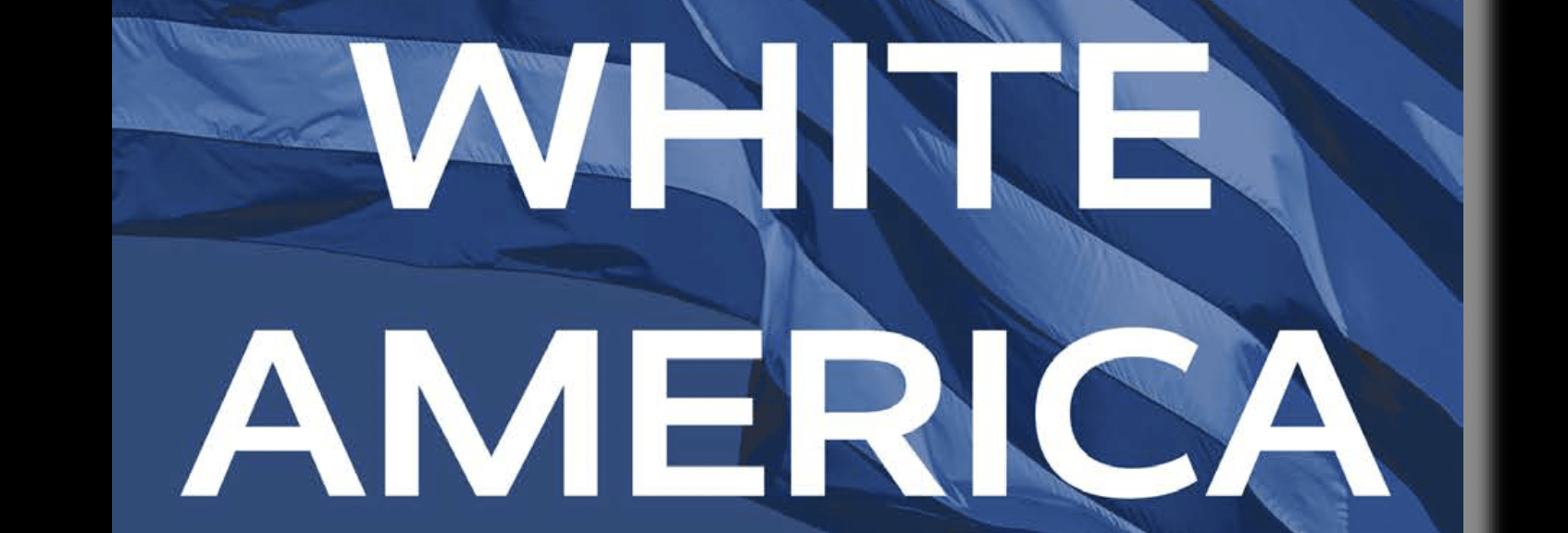
By Christine Sleeter
•
19 Mar, 2022
One of my former doctoral students, William Watson, is in the process of publishing Twelve Steps for White America . This is a book designed to help White people work through layers of racism in order to become allies in work for racial justice. The book and its accompanying workbook draws on the twelve steps that are presented in Alcoholics Anonymous, since they function as a useful set of problem-solving principles for the human condition. The book itself weaves together story, factual information, and reflection tools. The workbook involves readers more specifically in applying tools and insights from each of the twelve steps to their own lives. Both are organized around three parts. Part I, Confronting the Truth, engages readers in various forms of reflection that focus on the gap between the ideals of a democratic society, and the realities, particularly for people of color. Part II, Reconciliation, engages readers in recognizing whiteness-affiliated rigged advantages and learning to seek ways to relinquish those advantages. Part III, Renewal, engages readers in ongoing reflection and spiritual strengthening that will enable White people to stay in the work for racial justice for the long haul. It is an honor for me that my work on Critical Family History is part of this book. It is nested within Chapter Four, which guides readers in drilling down into their own family histories in order to identify rigged advantages and how these have played out in the past to structure one's life in the present. With William Watson's permission, I am posting the section of the workbook that deals with Critical Family History here, for your use.

By Christine Sleeter
•
22 Sep, 2021
State laws taking aim at Critical Race Theory and anti-racist education are making many teachers, teacher educators, and other university faculty wary about teaching students about structural racism. Chalkbeat has tracked efforts in 28 states to restrict education on racism, bias, the contributions of specific racial or ethnic groups to U.S. history, or related topics. But it has also efforts in 15 states to expand education on racism, bias, the contributions of specific racial or ethnic groups to U.S. history, or related topics. I'm grateful to be living in one of those 15 states. But if you live in one of the states that restricts what can be taught but you are committed to teaching the truth, what do you do? Critical family history can provide a way around restrictions on content. Family history has become a popular pastime that few would regard as subversive. Yet, digging into one’s own family history often reveals structural racism at work. After all, everyone participates in racism in one form or another. The trick is not so much one of finding examples, but rather of recognizing them and using them to piece together a larger picture of how racism (and classism and sexism) work. Here are some examples, some from my work and some from the work of others. When seeking information about a great-great-grandmother, one of my sisters tried googling her name. What she found was an article published in the Sacrament Bee in 1882 (the article is no longer freely available online) about an organization our ancestor was helping to found, called The Woman's Protective League. It was dedicated to eradicating the employment of Chinese people in San Francisco, and particularly Chinese workers in white families. The document raises so many questions! Why was this happening during the same year Congress passed the Chinese Exclusion Act? Why did our ancestor, a white immigrant from Switzerland, become involved in trying to expel other immigrants? What additional organizations, city ordinances, state laws, and so forth were aimed at driving out the Chinese? What responsibility do the descendants of this ancestor have today to confront and deal with consequences of our ancestor's actions? Googling another ancestor, I found evidence of another set of great grandparents acquiring land in Colorado through homesteading, and building up wealth from selling that land, to reinvest in buying up and then selling additional land. Before finding that evidence, although I had traced the movements of these ancestors, I wasn't sure how they had acquired their wealth. Finding that piece of evidence gave rise to other questions, the big one for me being: What do I do with inherited wealth, knowing its roots in the dispossession of Ute people? Are there implications for other descendants of homesteaders? Grappling with these questions led to my novel The Inheritance . Mica Pollock looked into how her European ancestors became U.S. citizens, after noticing that her students seemed to assume that the same rules for becoming a citizen had always been in place. She found that he was treated as a citizen before actually becoming one, and that citizenship was granted easily to white people at that time. Her study of her own family history raises important questions about how people become citizens, what the rules have been during different decades of history, who could and could not become a citizen, and how those rules have been applied to which groups. Newman and Gichiru used oral histories with six women in three generations of the African American Newman family to paint a portrait of how they navigated the structural racism embedded in schools they attended. They contextualized the interviews with other data sources such as newspaper articles and census records. Racism spills out of the stories the women told in the interview process, enabling the authors to elaborate on what structural violence looks like and how it works, from African American perspectives. Mokuria, Williams, and Page describe the learning that occurred when an African American student (article co-author Williams), in delving into her family history, discovered the reality that many enslaved women, including one of her ancestors, were forced to become concubines -- in other words, they were raped. The student chose to present her findings to the class, which was mostly white. For the student and the class, the learning experience was transformative.
These are examples of insights that can surface when people dig into their family histories. Teachers, however, need to be prepared for the tendency of white students to re-inscribe triumphal stories they likely learned about immigrant ancestors who arrived with nothing and made good. Without denying their hard work, it is possible to encourage students to look into (or look under) what may be forgotten, hidden, or buried. For example, for a long time I assumed that none of my ancestors had been slave holders because I had not heard about it and slavery did not immediately jump out as I did family history research. But when I specifically asked myself that question, I discovered that yes, indeed, a great-great-great grandfather had owned a family before the Civil War. That discovery led to my novel Family History in Black and White . You don't have to invent how to teach family history in a way that unearths structural racism. Others have already been doing so, and some are posting their work on the internet or writing about it. For example, Susan Thorne shares her course Reckoning with Inequality Via Critical Family History , which she taught at Duke University in Summer, 2021. Jennifer Mueller has been teaching critical family history courses in sociology, as a way to examine inter-generational transfer of wealth, for many years. As she explains in her 2013 article in Teaching Sociology — "Tracing family, teaching race: Critical race pedagogy in the millennial sociology classroom"—she specifically asks her students to look into questions such as: "Is there a family history connected to slavery? Did anyone in previous generations inherit property, money, or businesses? Did parents or grandparents receive down payment help for purchasing a home or assistance with college? Did the family take advantage of formal programs that would facilitate wealth/capital acquisition, like the Homestead Act or the GI Bill? Did anyone use social networks to get jobs, secure loans, open businesses?" (p. 175). She also works to create a collaborative climate in her classroom in which "we are all in this together" so that students help each other and support each other as they deal with difficult information. Of course, you may need to remove the term "critical" from any course title or description. But looking into family history with a critical eye for what may be hidden or buried can be an excellent tool to unearth and examine issues that have been otherwise banned.
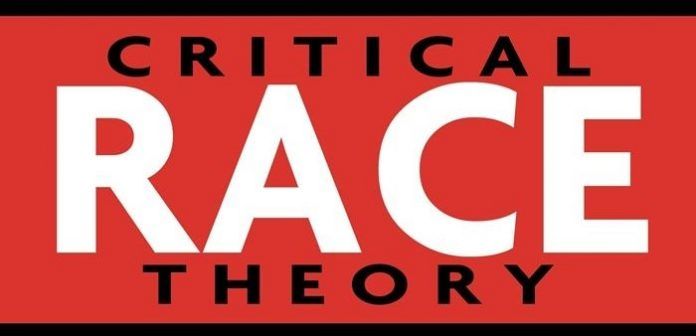
By Christine Sleeter
•
15 May, 2021
I have watched in amazement as state legislatures have rushed to ban the teaching of critical race theory, or any curriculum that is based on it. To date, bills have been advanced in seven states banning the teaching of critical race theory in schools, and in one of these states—Idaho—the bill has been signed into law. While such bills have not been advanced in California, attacks on ethnic studies increasingly call out critical race theory. Critics claim that it is a divisive ideology that teaches hate, indoctrinates students with hate toward white people, and injects race into what should be a colorblind curriculum. I come to this controversy as a white scholar of race and curriculum, who has used critical race theory as an analytical tool in some of my academic work, and who has spent decades teaching predominantly white audiences about race and racism. I view attempts to censor critical race theory as an uninformed reaction to fear, a reaction that over the long run will be more harmful than helpful to the nation’s ability to grapple with its legacy of racism. Critics of critical race theory (as well as critics of various forms of anti-racist education ) often base their concern on the belief that talking about race is what produces racism, and that if we all try to be colorblind, racism will go away. This belief contradicts findings of the numerous research studies I have reviewed for the National Education Association on the impact of ethnic studies courses on students (including white students). Studies find fairly consistently that students (especially white students) begin with shallow conceptions of what racism is and how racism works, but by the end of a course that focuses on structural racism, have generally more positive racial attitudes than they began with. In other words, rather than fomenting racial hatred, coursework that examines structural racism generally improves cross-racial understanding. The words “critical” and “race,” especially when put together, seem to operate as red flags that scare people. So let us briefly examine what critical race theory actually is. It is a stretch to call it an ideology. Merriam and Webster defined ideology as “the integrated assertions, theories and aims that constitute a sociopolitical program” and “a systematic body of concepts especially about human life or culture.” Critical race theory can be understood more accurately as a body of analytical tools for examining how race and racism work, premised on the assumptions that race is a social construct rather than a biological fact, and that racism is deeply ingrained in U.S. society. Critical race theory emerged from legal scholars of color who wanted to understand why civil rights legislation and litigation that purported to eradicate racism did not achieve its goal. In other words, following the Civil Rights movement, people of color have still experienced ongoing racial discrimination. Why? That is the central question the analytical tools of critical race theory seek to understand. For example, one analytical tool is taking seriously people of color’s experiences with racism, based on the assumption that white people experience race differently from people of color, but that most public theorizing about race has been done by white people. (The unfounded theory that talking about race produces racism is one such theory.) Another analytical tool, interest convergence, holds that people act on their own self-interest. Interest convergence asks how racial remedies that seem fair to white people actually advance white self-interests. If this brief explanation doesn’t sound like critical race theory as you have heard it discussed publicly, you have probably heard it discussed by people who do not understand it, but extrapolate what they think combining the words “critical” and “race” must mean. If I don’t recognize critical race theory as I hear it characterized in the news and on the floor of state legislatures, that is because the bogey man people have invented out of fear doesn’t bear much resemblance to the academic theory I have studied and used. But I think the deeper question legislators are wrestling with is this: Should elementary and secondary age children and youth study race and racism in U.S. society, particularly as framed through the intellectual work of scholars of color? Does such curriculum teach hate? It is important to realize that there is a huge difference between understanding, critiquing, and working to change white supremacy, versus hating white people. White supremacy is an institutionalized system that uses power to prioritize the needs and well-being of white people over of people of color, based on the assumption that white people are superior. White individuals do not have to uphold white supremacy, and many do not. In fact, challenging white supremacy and building inclusive institutions requires the involvement of white people. If we want to eradicate this nation’s legacy of racism, we have to learn to confront racism directly, and to see it as a systemic issue and not only an issue of individual prejudice. Teaching young people about racism is not indoctrination, but rather teaching viewpoints and providing factual data related to racism that they otherwise are not likely exposed to. Young people need to make up their own minds about how to think about race, but the better informed they are, the more thoughtfully they will do so. Rather than banning the analytical and pedagogical tools that enable this work, we would get much farther if we supported the preparation of teachers to teach race in the schoolhouse well.
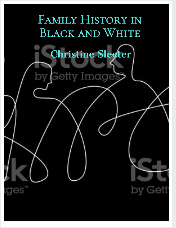
By Christine Sleeter
•
10 Feb, 2021
I grew up hearing a story about my grandfather who, with nothing but a third grade education, ended up providing for his family and doing well economically. The story's implication was that he worked hard for what he got, and if he could do it, so could anyone else. For a long time, I didn’t think to analyze this story critically. Like many other people, I simply accepted it. (He did work hard, by the way, that part of the story I’ve never disputed.) As I discussed in a recent talk invited by the Sutro Library in San Francisco, I began developing Critical Family History as I delved into my own white family’s historical experiences, replacing the historical amnesia I had grown up with, with a fine-grained look at how social systems had worked for, and for the most part benefited, my ancestors and ultimately me. I sensed that locating me and my people within that past would provide a basis for joining efforts to address injustices that have long historic roots, injustices that I have inherited and for the most part benefited from. I am not by any means the first person, nor the first professional class white person, to dig into my ancestors’ roles in creating, maintaining, and benefiting from social systems at the expense of people who have been minoritized and/or economically poor. But I think that I have provided a language and some examples that are helping to bring to the table others who are interested in, thinking about, or already engaged in this work. My own work can be found in a handful of academic articles (such as "Critical family history: Situating family within contexts of power relationships" published in 2016 by the Journal of Multidisciplinary Research , and "Becoming white: Reinterpreting a family story by putting race back into the picture" published in 2011 by Race Ethnicity and Education ). It can also be found in three novels: White Bread examines culture and language that German ancestors were forced to give up, even as they benefited from white supremacy. The Inheritance tells the story of a white person coming to grips with being a descendant of the colonizers of Indigenous peoples, and what one might do with that knowledge. Family History in Black and White , which will appear in about March 2021, explores racism today and historically through viewpoints of two school administrators, one Black and the other white. Stay tuned for that one, I think it’s my best novel yet. In mid-2020, I guest edited a special issue of the journal Genealogy , focusing on Critical Family History . Seventeen articles by authors in the U.S. and New Zealand explore topics such as uncovering a family's settler colonial history, examining what it means to be Black in an interracial family, finding out how white grandparents became citizens (the process for whites was not like the cumbersome process today), using photovoice to find untold stories in a Vietnamese immigrant family, and seeking dual U.S.-Cabo Verde citizenship. These articles show different ways of using Critical Family History, but what they all have in common are revelations that come when one's family is explicitly situated within historic relations of power. Just a couple of days ago, I was thrilled to be featured in a wonderful article in an Australian online-publication called Conversations. That article , "Truth telling and giving back: How settler colonials are coming to terms with painful family histories" highlights several white people in Australia and the U.S. who are uncovering “their family histories as a way of re-examining the impact of centuries of dispossession and slavery of Indigenous peoples.” When I started working with the idea of Critical Family History, I sensed that it has power to engage members of diverse groups of people in a critical examination of our shared pasts, and particularly pasts in which some of our ancestors built structures to benefit people like themselves, at the expense of other people. Those structures still exist. We inherit them. We can dismantle them. Many examples are now showing how.
Christine Sleeter
Author. Speaker. Teacher. Activist.
QUICK LINKS
BOOKS
© 2024
All Rights Reserved | Christine Sleeter
Designed by
www.otb.marketing
